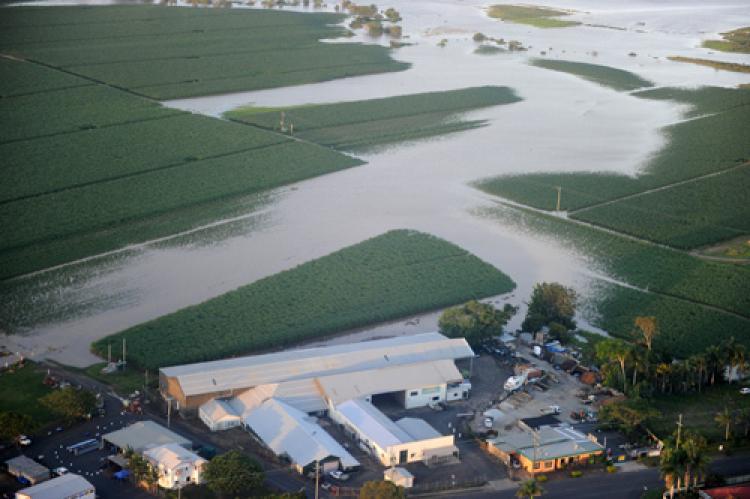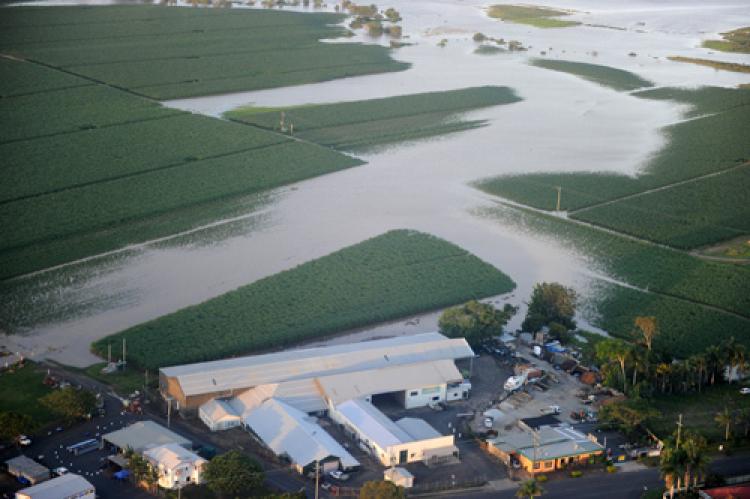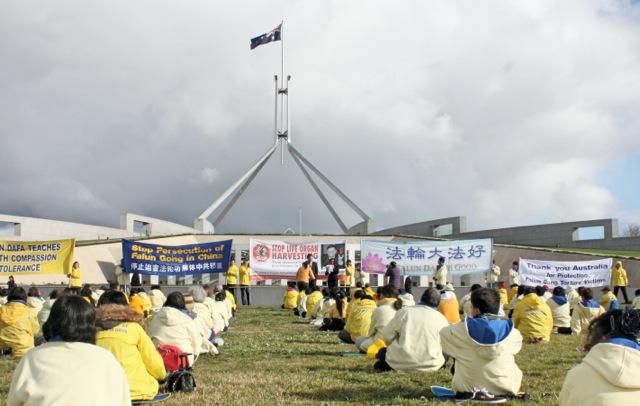Sugar futures soared in the United States and Europe, after a monster cyclone Yasi hit Australia’s northern region of Queensland, devastating hundreds of hectares of sugar crops.
Forecasts estimate the tropical cyclone could cause as much as $505 million in losses to Queensland’s sugarcane fields. Australia is the world’s third-largest sugarcane exporter.
Australian raw-sugar production may drop by 500,000 metric tons because of the storm, Wayne Gordon, an analyst at Rabobank in Sydney told Bloomberg. “First estimates indicate that half of the sugar cane crop in the affected region has been destroyed,” Fritsch said. “This would be 15 percent of Australia’s total crop.”
Yasi crossed the continent in the early hours of the morning on Feb. 3, reaching a category 5 rating with winds peaking at 175 miles per hour. It is the first category 5 cyclone to hit Queensland in almost 100 years.
In the U.K., March deliveries of sugar reached 36.08 cents in early trade, the highest for a most-active contract since November 1980. In London, prices reached $857 per metric ton, the highest since January 1989.
Australia’s Canegrowers chief executive Steven Greenwood said the affected region usually produced revenue of around $1.5 billion a year, reports the Wall Street Journal.
He said the north Queensland growers would again bear the brunt of the losses.
“Many sugarcane growers in far north Queensland have lost everything—house, crop, machinery, and livelihood in the devastating force of the cyclone,” he said.
“We’ve had reports from sugarcane farmers in and around Tully of crops that have snapped in half and whole farms that have been completely flattened.
The good news for disaster-struck Queensland is that the mining industry was spared further damage by Yasi, as it still counts the costs after the devastating January floods.
Following the deluge one of Queensland’s largest coal terminals has stopped exports and the largest in the state is at just 60 per cent capacity. This meant that nearly 2 million tons of coal remained undelivered each week to the international buyers.
The Australian reports that about 40 mines in Queensland have been affected by flooding and several have said they cannot meet their contracts.
Asian consumers of Queensland’s coal are also counting up the costs. Steelmakers face shortages of coking coal, and some forecasters warn the price of the essential commodity could double.
Forecasts estimate the tropical cyclone could cause as much as $505 million in losses to Queensland’s sugarcane fields. Australia is the world’s third-largest sugarcane exporter.
Australian raw-sugar production may drop by 500,000 metric tons because of the storm, Wayne Gordon, an analyst at Rabobank in Sydney told Bloomberg. “First estimates indicate that half of the sugar cane crop in the affected region has been destroyed,” Fritsch said. “This would be 15 percent of Australia’s total crop.”
Yasi crossed the continent in the early hours of the morning on Feb. 3, reaching a category 5 rating with winds peaking at 175 miles per hour. It is the first category 5 cyclone to hit Queensland in almost 100 years.
In the U.K., March deliveries of sugar reached 36.08 cents in early trade, the highest for a most-active contract since November 1980. In London, prices reached $857 per metric ton, the highest since January 1989.
Australia’s Canegrowers chief executive Steven Greenwood said the affected region usually produced revenue of around $1.5 billion a year, reports the Wall Street Journal.
He said the north Queensland growers would again bear the brunt of the losses.
“Many sugarcane growers in far north Queensland have lost everything—house, crop, machinery, and livelihood in the devastating force of the cyclone,” he said.
“We’ve had reports from sugarcane farmers in and around Tully of crops that have snapped in half and whole farms that have been completely flattened.
The good news for disaster-struck Queensland is that the mining industry was spared further damage by Yasi, as it still counts the costs after the devastating January floods.
Following the deluge one of Queensland’s largest coal terminals has stopped exports and the largest in the state is at just 60 per cent capacity. This meant that nearly 2 million tons of coal remained undelivered each week to the international buyers.
The Australian reports that about 40 mines in Queensland have been affected by flooding and several have said they cannot meet their contracts.
Asian consumers of Queensland’s coal are also counting up the costs. Steelmakers face shortages of coking coal, and some forecasters warn the price of the essential commodity could double.





Friends Read Free